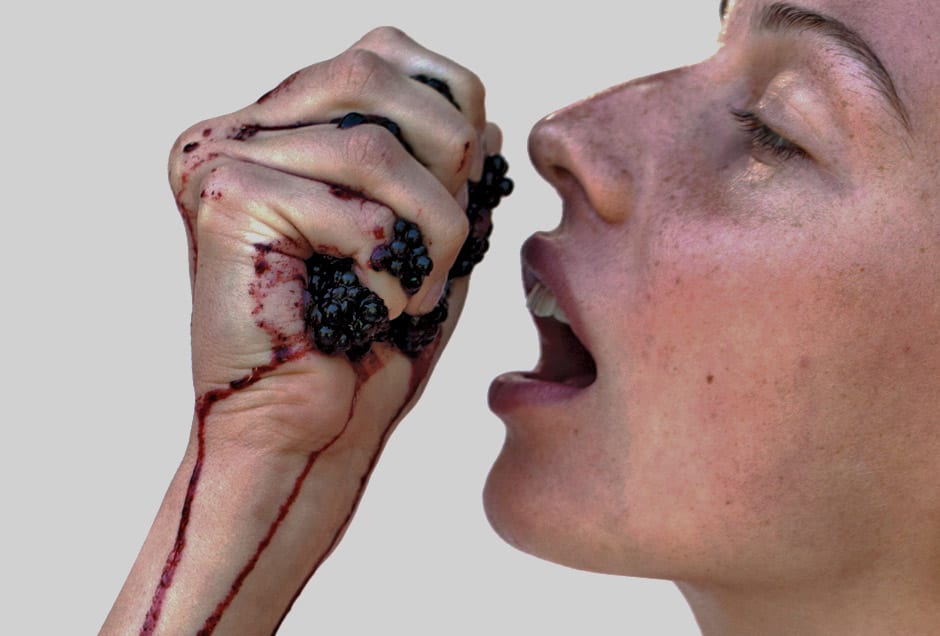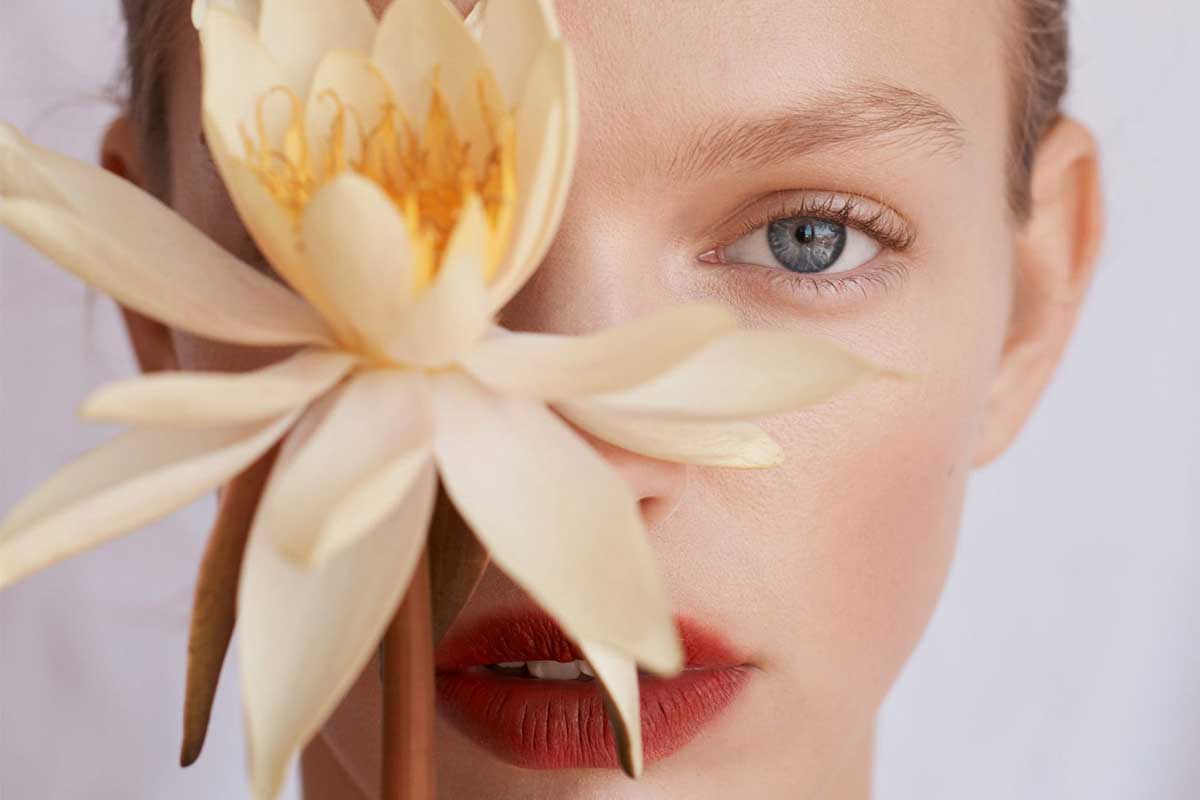
Finding sensuality in “emotion, hunger, desire, lust, whims, caprices, personal ties ... flavour, rhythms, intensities”.
"Dear Collector: We hate you.” In the early 1940s Anaïs Nin, a young French writer, and a few of her friends, including legendary author Henry Miller, were commissioned to write erotic fiction for an anonymous collector. He requested that the stories be written in a very specific style: no poetry, no flourish, no fluff, no long-winded prose, no elaborate rhetoric. Just sex. Base, brutish, sex. In her diaries published many years later, Nin reveals the contempt that she and her literary posse felt for their commissioner at having to strip away all manner of style and flair from these works, in essence robbing them of the nuances and accoutrements that she believed were fundamental to creating a compelling erotic narrative. In an impassioned letter to this shadowy figure, she purges her opinion of him and his dry, categorical view of sex. In it, she writes articulately and poetically, protesting with feverish conviction against the divorce of sex and narrative, leaving only the crude act of the flesh.
“Sex loses all its power and magic when it becomes explicit, mechanical, overdone, when it becomes a mechanistic obsession. It becomes a bore."
“You have taught us more than anyone I know how wrong it is not to mix it with emotion, hunger, desire, lust, whims, caprices, personal ties, deeper relationships that change its colour, flavour, rhythms, intensities.”
The fundamental idea that Nin expresses so eloquently in her stirring missive is that in order for the language of sex to do its job by arousing the deepest aspects within the stratum of human desire, the bold outlines of the explicit must be offered shading, colour, density and texture. For erotica to activate the darkest, most mysterious corners of the sexual psyche, it need be suffused with a diversity of characters and worlds that animate tantalising scenarios, so vivid and alive they engage every sense. It needs to depict the kind of sex that delves, digs and dives further and deeper into the emotional as well as the physical, tugging out the richness and fullness of fantasy, longing and lust. Sex that offers a portrait of passion so pungent, so visceral, so carnal it could be touched, tasted, sucked in, singeing the imagination with the rapture of heated exchange.
“Sex does not thrive on monotony. Without feelings, inventions, moods, (there are) no surprises in bed,” writes Nin to her collector. “Sex must be mixed with tears, laughter, words, promises, scenes, jealousy, envy, all the spices of fear, foreign travel, new faces, novels, stories, dreams, fantasies, music, dancing, opium, wine.”
In the past not only writers like Nin, but also artists who work across various visual mediums have sought to capture the poetic and sensual elements of eroticism through the implication of narrative.
Painters, photographers and filmmakers like Egon Schiele, David Hamilton and Catherine Breillat have demonstrated how a single erotic image can be more potent than a library of illicit material if it implants the suggestion of a story in the infinite field of the human imagination.
Yet, sadly, the artistic eroticism of bygone days is now considered by many to be redundant, even quaint – admired as lovely relics but nothing more – their potential for arousal dimmed by an increasingly desensitised, sex-saturated society whose preferences en-masse more closely resemble those of Nin’s parochial collector. What he wanted was not erotica. What he wanted was porn.
The narrative of the erotic, the kind that paints the sexual experience with finer and subtler tones, has to a large extent been muted by a shamefully myopic mainstream media and multi-million dollar porn industry. The homogenised, highly explicit sexual imagery that we now see in magazines, film and television has been drenching our visual landscape for the last few decades to an unprecedented degree. Unless you’re trawling through the art photography section of an indie bookstore, the only points of reference you’re likely to come across for what is considered a desirable sex aesthetic in this day and age is offered up by men’s magazines like Playboy, Maxim and Sports Illustrated, or commercial fashion corporations like Victoria’s Secret. Even the most confronting hardcore porn is as accessible on the internet as a recipe for baked chicken breast (Google even confuses the two from time to time). As a result our society has evolved to relate to sexual imagery at its most simplistic level – a depressing fact that is having ramifications in real three-dimensional life, with studies showing that consumption of pornography can lead to erectile dysfunction. Its effect on the sexual self-image of women, who are inflating their breasts and slicing off their labia at an alarming rate, is also deeply troubling.
There is, as yet, no competing force great enough to effectively counter an image machine so prolific and voracious, but thankfully the gynecological perspective of pornography and the platicised portrayal of women in mainstream magazines isn’t everyone’s aphrodisiac. There are artists, writers and image-makers today attempting to reinvigorate erotica in a way that counters the annexing of sex by commercial enterprise that we’ve seen over the last few decades, that is not only rooted in nostalgia but presents a fresh and contemporary perspective. April-Lea Hutchinson is one of them. As a photographer who shoots erotic images of women, Hutchinson strives to achieve much more through her work than basic titillation. “There is something elemental, primal and honest about the human nude form,” she explains.
“I feel there are no boundaries left in erotic photography. I see so many photos of naked women that bore me yet hit the mainstream because it’s a naked woman with her legs wide open. There is nothing left to the imagination, no storytelling and no thought involved.” A major part of what sets Hutchinson’s images apart from much of the sexually explicit material circulating the mainstream is her choice of models. “I don’t look to photograph perfect and plastic models,” she says. “I adore working with women of all shapes, sizes, ethnicity and age. I look for women who are confident, open and free with their bodies.”
But what of men? Aren’t they the ones driving the shift toward this supposed sexual ‘ideal’? If the modern sex aesthetic that we’re constantly bombarded with didn’t appeal to the majority of men, why is it selling? Even if they don’t admit it, they all secretly love it, right? Not exactly. As Naomi Wolf articulated in The Beauty Myth, “What editors are obliged to appear to say that men want from women is actually what their advertisers want from women.” Darren Ankenman is also a photographer who deals with erotica in a way that challenges the commercial sex aesthetic and harks back to a time when a more natural, diverse female form was celebrated. And he happens to be a man. Based in Los Angeles there is no shortage of primped and polished beauties that meet the common standard for what is considered sexually arousing in our culture, but for his personal work, which includes a series of nudes, Ankenman prefers to aim his lens at something a little less obvious. “There are plenty of conventional and commercial-looking actresses and models, but their ‘perfection’ can be deceptive and it’s usually not all that interesting in photographs,” he says. “I think the slickness and glossiness and smoothness is what’s offensive. What I look for in women generally is character.”
Ankenman recently published a limited-edition nude series of a girl named Andrea. Andrea is classically beautiful in a way you don’t see much in print media anymore. One shot has her silhouetted against a window lightly shaded by a fine lace curtain. She stands with her back to us, draped in a delicate whisper of sheer mesh that reveals the full expression of her shapely form. Her hands clutch at a long mass of tangled hair, the same colour as the soft tuft that hints at itself through the ripeness of her slightly parted thighs. She looks to be waiting for someone, someone she longs for who may never arrive. Or perhaps she’s just teasing the teenage boy across the street.
What resonates in these images of Andrea and many others created by artists like Ankenman and Hutchinson, is the interlacing of strength and womanly self-possession with sensuality and vulnerability. The women in these images at once possess a very raw and relatable quality, while at the same time, necessarily swathed in the romanticised gaze of the artist, maintain that spike of mystery and illicitness that is undeniably arousing.
What we are looking at is a whole person set within an often ambiguous context upon which we can project a myriad of fantasy.
This is what ultimately lacks in the kind of sexual imagery we see everywhere today, where the feminine is subordinated and objectified – the sum of her sexual parts.
“(There is) nothing more homogeneous than a pornographic photograph,” wrote French philosopher and literary theorist, Roland Barthes. “Pornography ordinarily represents the sexual organs, making them into a motionless object (a fetish), flattered like an idol that does not leave its niche; for me, there is no punctum in the pornographic image; at most it amuses me (and even then, boredom follows quickly). The erotic photograph, on the contrary, does not make the sexual organs into a central object; it may very well not show them at all; it takes the spectator outside its frame, and it is there that I animate this photograph and that it animates me.”
Truly erotic images are more than simply a naked body – legs, breasts and a waxed vulva placed on a perfectly proportioned form. They provide food for the imagination; they are the suggestion of a story. And this is the very thing that so incensed Nin at having to strip from her erotic narratives for the Collector: the narratives themselves. It isn’t so much the ‘real’ that is lacking in erotic material today, but the essence and full expression of the fantasy. As depth and complexity in the psychology of human sexual desire – in both men and women – is reduced to the most basic act that deals in flesh alone, all of the subtleties of the sexual psyche are being ignored, nullified. In this, as women and as men, we are robbing ourselves. In focusing so diligently on what commercial enterprise tells us is the male ideal for female sexuality, and sex in general, we are weakening our connection to the erotic narrative within, and deadening ourselves to one of the most exhilarating human experiences: that rapturous kind of sex that engages our entire being: flesh, mind and heart. “If you nourished your sexual life with all the excitements and adventures which love injects into sensuality, you would be the most potent man in the world,” wrote Nin.
“The source of sexual power is curiosity, passion. You are watching its little flame die of asphyxiation … Only the united beat of sex and heart together can create ecstasy.”



